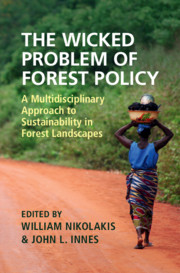 The Wicked Problem of Forest Policy
The Wicked Problem of Forest Policy 1 - The Wicked Problem of Forest Policy
Published online by Cambridge University Press: 24 July 2020
Summary
There is a global consensus that stopping deforestation is crucial for planetary health. Global efforts to curb deforestation, such as the Paris Agreement, the United Nations Collaborative Programme on Reducing Emissions from Deforestation and Forest Degradation in Developing Countries (REDD) programme, and the aspirational New York Declaration of Forests, involve significant international and cross-sectoral coordination. They also involve the creation of new institutions and governance mechanisms to accomplish the goals set out in these instruments. At the same time, national-level efforts to support human development, reflected in the United Nations (UN) Sustainable Development Goals (United Nations, 2016a, 2016b), aim to increase the welfare and wellbeing of populations living in poverty. Meeting these development goals will inevitably have cross-cutting effects on initiatives to address deforestation. In balancing these goals, policy-makers are confronted with wicked problems – or problems where there are moral considerations and where limited information is available for policy-makers. This book is focused on how wicked forest policy problems have been, and can be, addressed.
- Type
- Chapter
- Information
- The Wicked Problem of Forest PolicyA Multidisciplinary Approach to Sustainability in Forest Landscapes, pp. 1 - 30Publisher: Cambridge University PressPrint publication year: 2020
